Take a number: Migrants, blocked at the border, wait their turn to apply for asylum

JUAREZ, Mexico — At approximately 1 o’clock on Wednesday, a white van adorned with a pink heart decal surrounding the letters DIF pulls up to the foot of the Paso del Norte, one of the bridges that leads from Juarez to El Paso, Texas. Two young men in black fleece jackets embroidered with the same pink heart — the logo of Juarez’s department of family services — emerge to assist their passengers: a group of wary-looking asylum seekers.
There are exactly 31 of them, nearly half of them small children, some too young to walk. They have no backpacks or suitcases, clinging only to each other as they as they climb cautiously from the back of the van and quietly form a line by a fence next to the bridge entrance.
A man and woman wearing orange and tan shirts with the Mexican flag on their sleeves appear to have arrived separately but at the same time as the asylum seekers, and seamlessly replace the DIF workers, employees of the municipal government in Juarez, as their shepherds. They are with Grupos Beta, the humanitarian branch of Mexico’s federal immigration agency, whose mission is to offer assistance and protection to migrants.
The Grupos Beta officers, who refer questions from reporters to their superiors, each clutch a clipboard holding several sheets of lined paper, which they appear to be double- and triple-checking meticulously. It’s unclear whether this version of the list contains the names of the migrants, each of whom has an identifying number written in black permanent marker on the inside of their wrists.
Including children.
These organized drop-offs have become a regular occurrence at the Paso del Norte over the past few weeks, ever since Mexican authorities began removing hundreds of asylum seekers from the bridges between Juarez and El Paso, where they’d previously been camped out. The encampments emerged over the summer, after CBP began placing officers in the middle of the international bridges to block those without documentation from proceeding to the port of entry — forcing asylum seekers to wait on the Mexican side for permission to cross. Earlier this month, Mexican officials ordered all those camped out on the bridges between Juarez and El Paso to relocate to la Casa del Migrante, a Catholic-run migrant shelter located approximately 30 minutes away from the Paso del Norte by car.
According to various advocates and others who observed the situation on the bridges over the summer, it was volunteers with the Mexican Red Cross who first created a waiting list to help maintain order within the encampments as asylum seekers waited for their turn to cross. The list was then transferred to the Casa del Migrante along with the asylum seekers, when they were forced to move there in November. Accounts vary on when, exactly, and with whom, the practice of tracking migrants with numbers on their arms originated, but it has now become a part of the process for all who wish to seek asylum at one of the U.S. ports of entry in El Paso.
What, in part, started as an effort by the municipal government in Juarez to offer shelter to the growing encampment of asylum seekers on the bridges has evolved into a complicated, ad hoc arrangement of Mexican NGOs, municipal, state, and federal agencies to funnel asylum seekers away from the U.S. ports of entry in El Paso. At the center are U.S. Customs and Border Protection officials, who control the flow of migrants, notifying Mexican immigration authorities in Juarez how many people from the list can be allowed over the border each day and when.
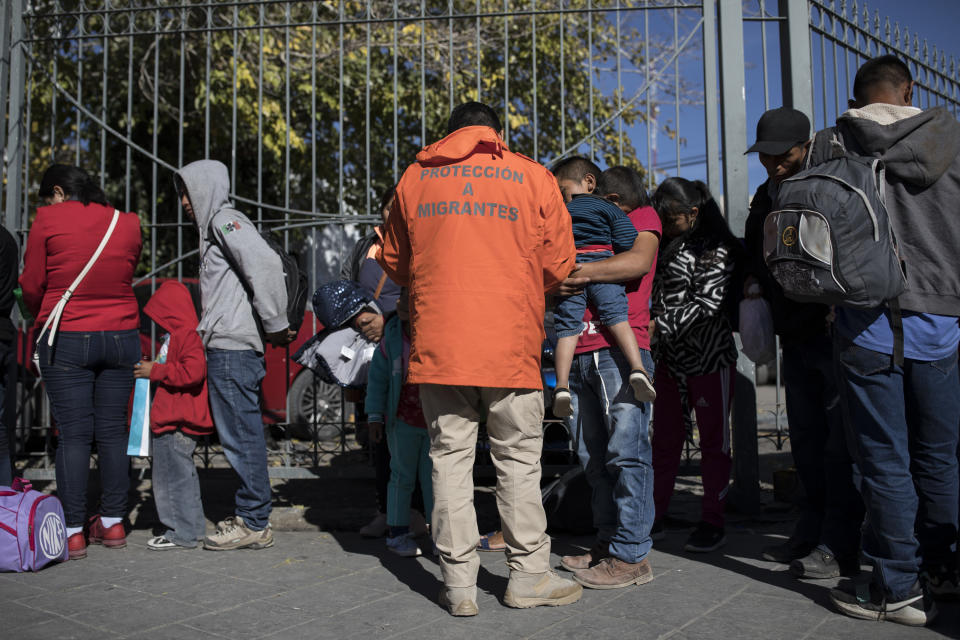
A spokesperson for CBP acknowledged that officials in El Paso communicate to Mexican immigration officials in Juarez how many new asylum seekers can cross the border each day, depending on capacity at the ports of entry, stating that “CBP is not denying or discouraging travelers from seeking asylum or any other form of protection, or from claiming fear of return to their home country.” But the ACLU and other local immigrant rights advocates argue that U.S. border officials are violating their responsibilities under federal and international law, by preventing migrants who say they are fleeing persecution from freely accessing official U.S. ports of entry.
So far, most asylum seekers who’ve been thrust into the new Juarez system have only had to wait a few days before they are allowed across the bridge. But in Tijuana, across from San Diego, where CBP has relied on a similar waitlist process to meter the flow of asylum seekers, the recent arrival of thousands of migrants traveling in caravans from Central America has overrun shelters and led to confrontations with local residents, a clash with border guards who used tear gas to disperse crowds attempting to climb the border fence — and months-long wait times.
They also warn of the high potential for corruption within such operations, noting that similar wait-management systems have also recently emerged in Matamoros and near other border crossings across from the Rio Grande Valley in Texas, where migrants have reported Mexican officials demanding payments in exchange for a spot on the list.
Though CBP denies involvement or knowledge of how the waitlist process in Mexico works, Blanca Navarette, director of Derechos Humanos Integrales en Acción, a Juarez-based human rights organization, calls CBP “a violator of human rights that transfers its responsibility to receive [asylum seekers] to the Mexican authorities.”
“Clearly, the root of the problem is CBP,” said Alan Dicker, an El Paso-based advocate who has been observing CBP’s interactions with asylum seekers at the ports of entry as a volunteer for the ACLU. Dicker dismissed the agency’s claim that restricting access to ports of entry is simply a response to capacity constraints, noting that in the past, CBP has opened temporary facilities to accommodate influxes at the border.

“If they decided to put a few more processing officers here to expand their capacity, they could do it very easily,” he said. “They have decided not to do things like that anymore and artificially create this sort of capacity issue.”
After the group of 31 crossed Wednesday afternoon, another smaller group was transported from the shelter to the bridge at seven that night. Anyone else who attempted to present themselves without documentation that day was stopped, including a 15-year-old girl and her mother who’d traveled by themselves from Guatemala.
When the diminutive pair, both of whom were well under 5 feet, approached the halfway point on the bridge without documents, the CBP agents physically blocked them from passing. But that was the extent of their interaction with U.S. authorities, who instead allowed a private security guard — contracted by the state bridge authority in Juarez to oversee pedestrian tolls and other activity on the bridge — to swoop in and tell the women that if they wanted to request asylum in the United States they had to go back to the bottom of the bridge, talk to the Grupos Beta people in orange, go to Casa del Migrante and get on the list.
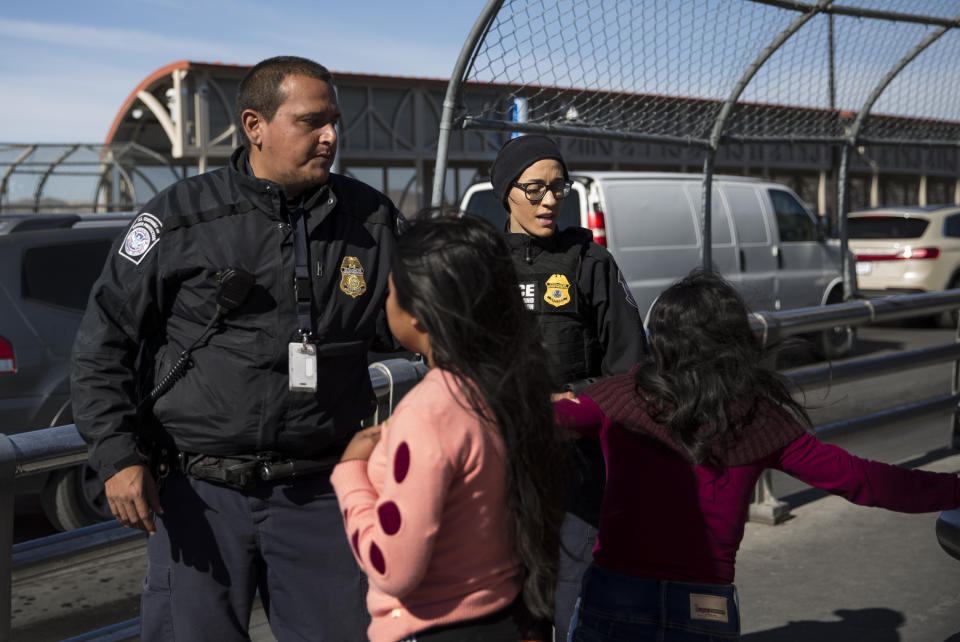
Shaw Drake, policy counsel for the ACLU of Texas’ Border Rights’ Center, said that sequence of events illustrates “the crux of the problem with putting CBP agents in the middle of the bridge with general instructions to turn away anyone without documents.”
“CBP summarily turning them away with no questions whatsoever potentially puts people at risk and is in violation of [the agency’s] legal responsibility to inspect and process people who are presenting themselves to agents at the ports,” he said. “Without any conversation with that person, those agents have no idea if that family or individuals were Mexican citizens, immediately fleeing violence in Juarez or any other situations they may have been facing.”
Mexican citizens seeking asylum in the United States are being directed to the shelter in Juarez along with nationals of Honduras, Guatemala, Cuba and various other countries.
“The entire baseline of post-World War II refugee law is to ensure that governments do not return individuals into the hands of their persecutors,” said the ACLU’s Shaw, arguing that there is “no other more clear-cut case of non-refoulment [violation] than returning a Mexican asylum seeker to Mexico and into a system that requires them to interact on multiple levels with the Mexican government.”
A young woman named Lorena and her two young children left their home in southern Mexico at 4 a.m. on Wednesday and boarded a plane to Juarez, carrying an assortment of personal records, including police reports documenting the consistent death threats she and her family have received from local cartel members who murdered one of her brothers for refusing to pay a “quota.”
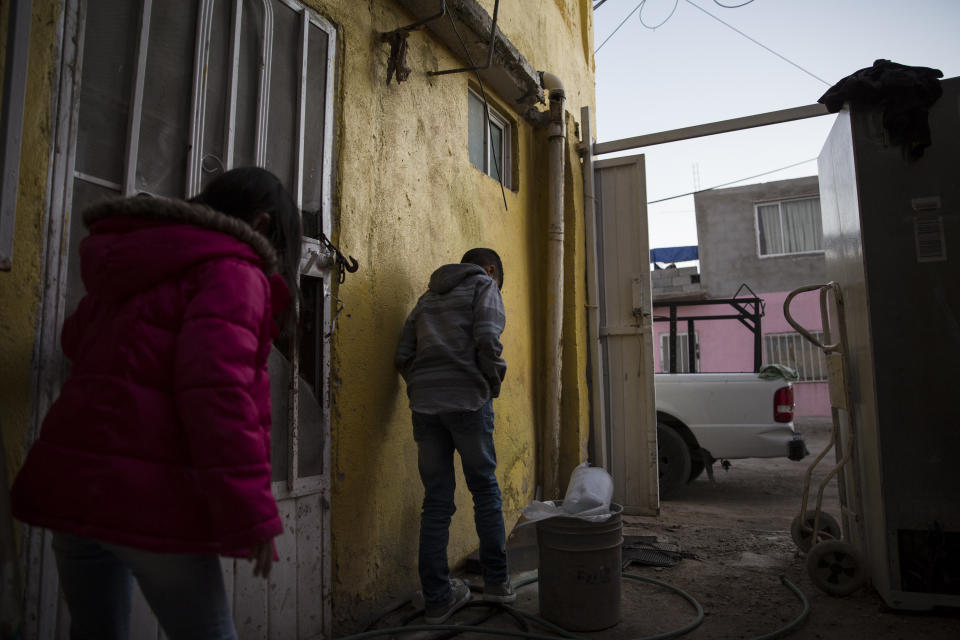
Within a few days of her brother’s murder, Lorena said, the men who killed him began targeting her and other members of her immediate family. Sometimes they would deliver the message by phone, other times in person, but it was always the same: They were going to kill Lorena and her kids.
Faced with similar threats, Lorena’s other brother fled to the United States, where he successfully obtained asylum. Now, she and her children hope to do the same.
Upon arriving in Juarez, the three were greeted by Alex Varela, a U.S citizen and former Marine from El Paso who has spent much of his life on both sides of the border and has parlayed his binational savvy into a variety of odd jobs ranging from construction to the occasional gig as a private security guard for Americans doing business in Juarez. Varela, who also runs a soup kitchen with his church, in the past has helped escort asylum seekers over the bridges that span this part of the Rio Grande to make their claims at one of the official U.S. ports of entry. He says he agreed to do the same for Lorena after meeting her family and hearing about their plight during a recent trip to southern Mexico with his church. But it’s been at least two years since Varela last accompanied a family to request asylum at the border, and a lot has changed since then.

Before, Varela recalls that asking for asylum at the border — the first step in what can ultimately be a lengthy, complicated legal process — required little more than walking across the pedestrian bridge and presenting oneself at the U.S. port of entry in El Paso.
“You would go, talk to someone, and you’d start the paperwork,” he said.
However, since this spring, CBP agents have been stationed in the middle of the Paso de Norte and other bridges, at the international line that technically separates the U.S. and Mexico, essentially blocking anyone without documentation from reaching the port of entry. This arrangement, which began following the implementation of the Trump administration’s ill-fated “zero-tolerance policy,” resulting in the separation of thousands of immigrant families along the southwest border, has continued — even as the White House has implemented policies to prevent migrants from seeking asylum except at official ports of entry.
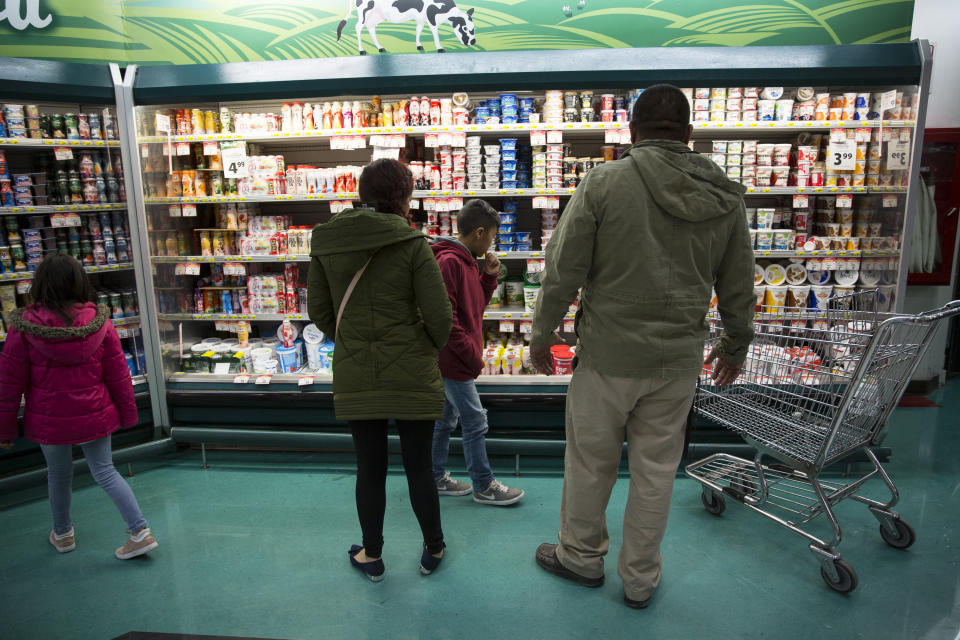
Previously, under international law, even refugees who crossed the border illegally could still request asylum by presenting themselves to border agents.
Ahead of Lorena’s arrival this week, Varela went to survey the situation at the Paso de Norte, where he says he explained to a CBP officer that he was trying to help a Mexican family seek asylum in the United States. He was told they had to get on the list and was referred to Grupo Beta, who instructed him to bring the family to the migrant shelter and wait for their numbers to be called. So when Lorena and her children arrived in Juarez on Wednesday, that’s what Varela did.
By the time Lorena and her children got to Casa del Migrante on Wednesday there was no more space for them; the 280-bed shelter was full. A woman named Rosie, who said she did not have the authority to allow media into the shelter, took Lorena and her children inside to put them on the list. They returned a few minutes later with numbers 1173, 1174, 1175 scrawled on their inner wrists in black ink, and a piece of paper with a phone number to call the shelter in the morning to find out what numbers were being processed that day.
“It’s how you would mark an animal,” said Varela.
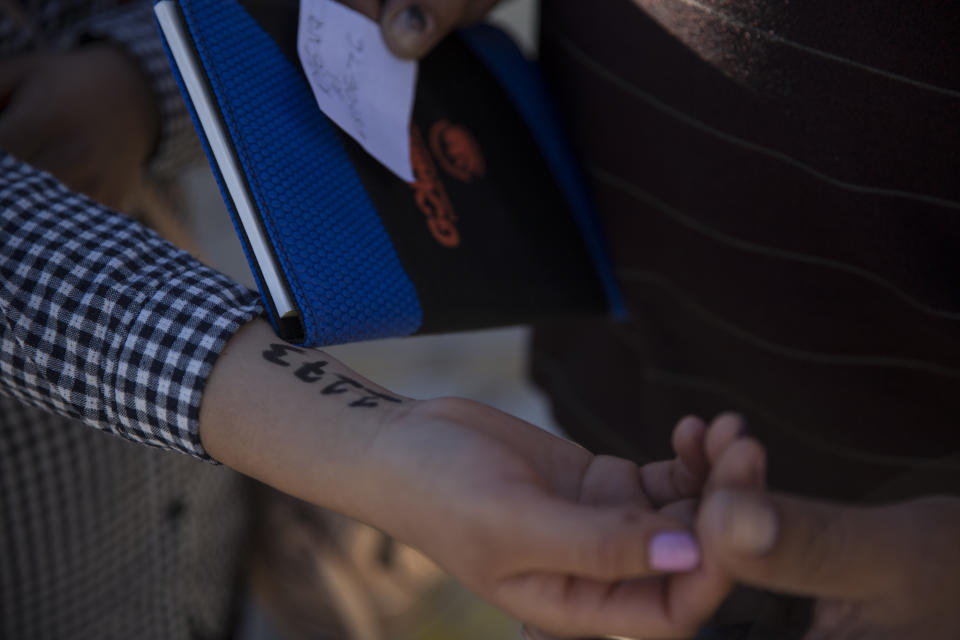
Outside the shelter, Lorena said the woman had asked her for all three of their names, dates of birth, where they were from, and why they wanted to leave. She also said the woman told her that the United States isn’t granting asylum to anyone right now and that if she attempts to cross, her kids will be taken away. Under current administration policy, which changes frequently, neither is true.
Varela would take Lorena and the children to a vacant house owned by one of his relatives in Juarez until space opened in the shelter or their numbers got called, whichever came first. But not everyone who arrives in Juarez is fortunate enough to have a local contact. As Varela waited for Lorena outside the shelter, a young man and woman from Cuba arrived by themselves, only to hear that they too would have to find somewhere else to stay.

_____
Read more from Yahoo News:
Trump asks why Mueller hasn’t interviewed ‘hundreds’ of campaign staffers
George Conway: Republican Party has become a ‘personality cult’ under Trump
Trump administration defends asylum crackdown after judge’s ruling
An American killing: Why did the U.S. Park Police fatally shoot Bijan Ghaisar?
Cory Booker: I will ‘take some time over the coming months’ to consider 2020 bid
PHOTOS: Trump participates in the G-20 summit in Buenos Aires, Argentina


